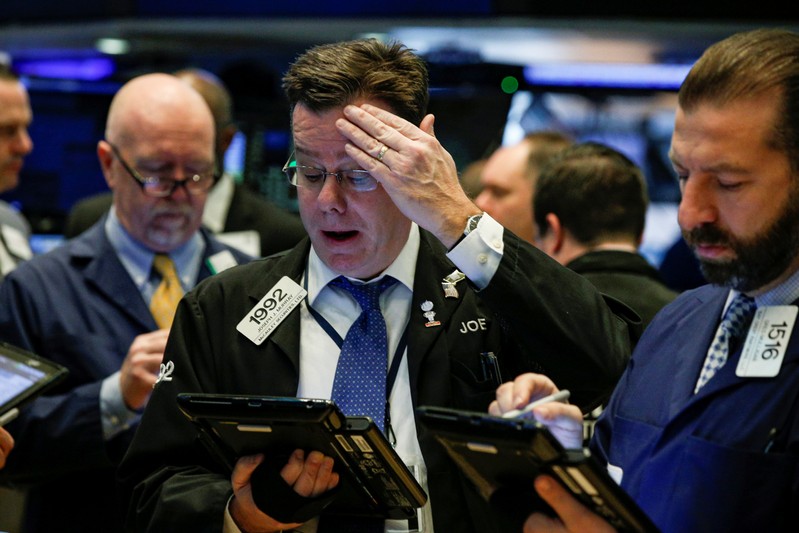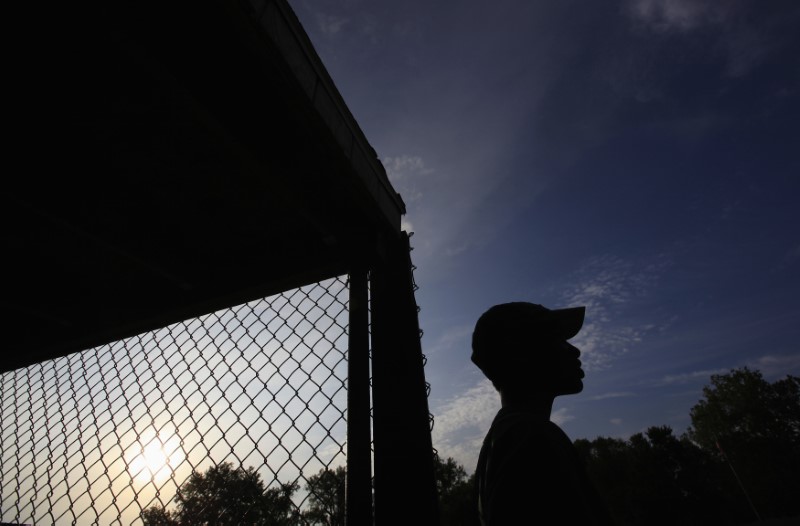
Traders work on the floor of the New York Stock Exchange, (NYSE) in New York, U.S., February 5, 2018. REUTERS/Brendan McDermid
February 6, 2018
By Tanya Agrawal
(Reuters) – The Dow Jones Industrial Average was set to open almost another 1 percent lower on Tuesday after two days of heavy losses that have undermined faith in the U.S. stock market’s almost decade-long rally.
Both the S&P 500 and the Dow sank more than 4 percent on Monday, their biggest falls since August 2011, as concerns over rising U.S. interest rates and government bond yields hit record-high valuations of stocks.
Analysts remained cautious on predicting that the fall – which has helped wipe $4 trillion off global share values – is anything more than a substantial correction to a rally that dates back to the 2008-2009 financial crisis.
The scale of nerves was underlined by a surge in the volatility index <.VIX> and the halting of trading on Tuesday in a handful of exchange-traded funds that allow investors to bet on market swings staying low.
“The one thing I could say with confidence is that volatility has suddenly come back into the market,” said Andre Bakhos, Managing Director at New Jersey-based New Vines Capital.
“The declines in markets are steep and vicious and are fostering a feeling of fear which begets irrational behavior. So this market is now driven on fear of rates and wages. That basically means good news now is bad news.”
By 8:11 a.m. ET (1311 GMT), Dow e-minis <1YMc1> were down 232 points, or 0.97 percent, with 200,003 contracts changing hands. They had fallen about 850 points in Asian trading.
S&P 500 e-minis <ESc1> were down 13.75 points, or 0.53 percent, with 1,173,713 contracts traded. Nasdaq 100 e-minis <NQc1> were down 25.75 points, or 0.4 percent, on volume of 207,522 contracts.
SHUDDERS
Wall Street’s plunge sent shudders across global financial markets. Europe’s main bourses were down around 2 percent while Japan’s Nikkei <.N225> dived 4.7 percent, its worst fall since November 2016, to four-month lows.
“The catalyst for the biggest U.S. equity sell-off for six years is being blamed on a delayed realization that inflation pressures are rising perhaps more quickly than anticipated,” said James Knightley, economist at Dutch bank ING.
“As such, this appears to be more of a ‘healthy’ correction rather than the start of a broader re-evaluation for earnings.”
The constant rise in U.S. share values since 2009 has been fueled by the extraordinary easy-money policies of the world’s major central banks, and most recently by President Donald Trump’s tax cuts, promises of corporate deregulation and infrastructure spending.
With the Federal Reserve now well on course to raise rates back to pre-crisis levels, however, some investors say the market is over-stretched.
Benchmark 10-year note yields <US10YT=RR> had surged to 2.885 percent, the highest since January 2014 but fell back to as low as 2.707 percent on Monday as the stock selloff accelerated. They stood at 2.75 percent on Tuesday.
The Fed has been scared by market selloffs on a handful of occasions since 2015, slowing the pace of rate rises several times. The fall in yields this week suggest investors expect the past week’s action may yet stay its hand.
(Reporting by Tanya Agrawal; Editing by Arun Koyyur)

